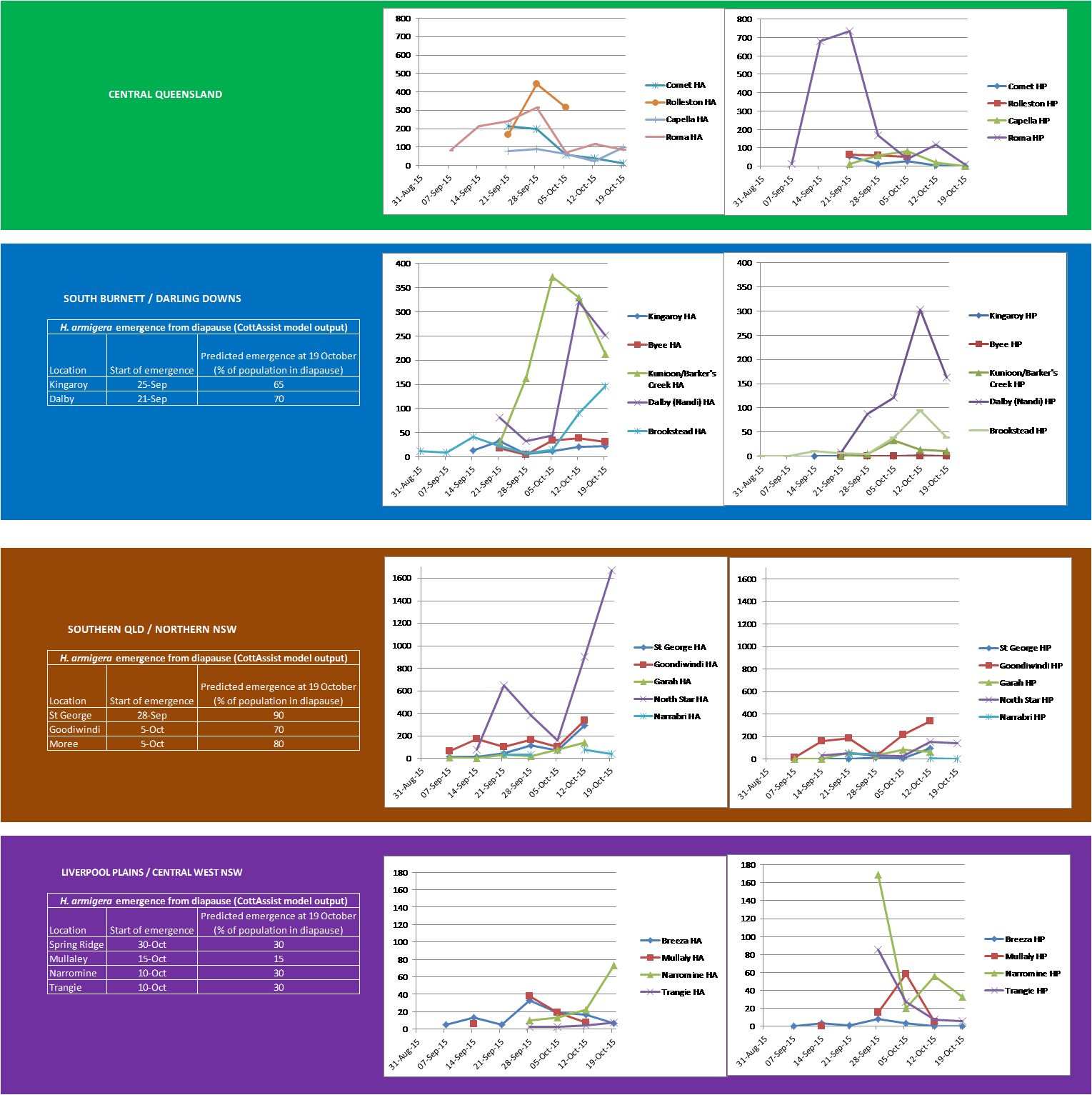Helicoverpa moth activity to 19 October, 2015.
Over the past 1-2 weeks we have seen increasing H. armigera catches in the pheromone traps across Queensland (Qld) and northern New South Wales (NSW).
The series of graphs of H. armigera and H. punctigera trap catches from August to 19 October are below. Included with these graphs are the current predictions for the level of emergence in each of the regions.
To summarise the data:
- No emergence data is calculated for Central Qld as there is typically little diapause in these regions.
- H. armigera will emerge earlier than the emergence model suggests if they have pupated in soil that is warmer than the air temperature used in the model. For example, pupae that are on the northern side of furrows/hills, pupae in soil without stubble will experience higher temperatures and faster development.
- Emergence from diapause commenced from the third week of September in the more northern and western districts, and predictions for these areas suggests 65-90% of the diapausing population of H. armigera will have emerged by 19 October.
- In the Central West of NSW and Liverpool Plains, moth activity has been considerably lower than other regions further north, most likely because of the cooler conditions. The model prediction is that emergence started in early October, with only 15-30% emergence by 19 October.
- Once emergence starts, it generally progresses quickly with 100% of the population emerging within 2-3 weeks. In the cooler areas, this progression may be somewhat slower. For example, the prediction for Narromine and Trangie is for 100% emergence from diapause by 6 October (approximately 4 weeks from commencement of emergence).
Helicoverpa punctigera activity has been low in most regions with the exception of Roma during September, and Dalby and Goondiwindi in mid-October. The bigger catches seen in October are possibly associated with the warmer conditions and movement of storm systems that can have wind systems capable of moving moths, and other insects from west/north to eastern districts.
Click on graph for a larger version of all regions, or view graphs from individual regions by clicking on the region in the list:
- Central Qld
- South Burnett / Darling Downs
- Southern Qld / Northern NSW
- Liverpool Plains / Central West NSW
Graphs on left (HA) = Helicoverpa armigera. Graphs on right (HP) = Helicoverpa punctigera.

